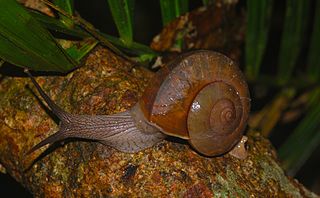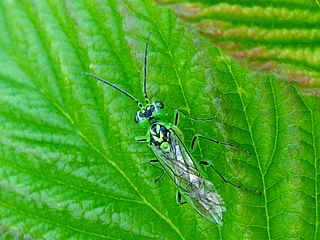
Extinction is the termination of a taxon by the death of its last member. A taxon may become functionally extinct before the death of its last member if it loses the capacity to reproduce and recover. Because a species' potential range may be very large, determining this moment is difficult, and is usually done retrospectively. This difficulty leads to phenomena such as Lazarus taxa, where a species presumed extinct abruptly "reappears" after a period of apparent absence.

The cicadas are a superfamily, the Cicadoidea, of insects in the order Hemiptera. They are in the suborder Auchenorrhyncha, along with smaller jumping bugs such as leafhoppers and froghoppers. The superfamily is divided into two families, the Tettigarctidae, with two species in Australia, and the Cicadidae, with more than 3,000 species described from around the world; many species remain undescribed.

The International Union for Conservation of Nature (IUCN) Red List of Threatened Species, also known as the IUCN Red List or Red Data Book, founded in 1964, is an inventory of the global conservation status and extinction risk of biological species. A series of Regional Red Lists, which assess the risk of extinction to species within a political management unit, are also produced by countries and organizations.

Colubridae is a family of snakes. With 249 genera, it is the largest snake family. The earliest fossil species of the family date back to the Late Eocene epoch, with earlier origins suspected. Colubrid snakes are found on every continent except Antarctica.
Moca is a genus of moths in the family Immidae. The genus was erected by Francis Walker in 1863.

Imma is a large genus of moths in the obtectomeran "micromoth" family Immidae. This is the type genus of its family. They are widespread in the tropics, with most species occurring between the Himalayas and the Oceanian region; the genus is furthermore plentiful in the Neotropics, but not very diverse in the Afrotropics.

A species is often defined as the largest group of organisms in which any two individuals of the appropriate sexes or mating types can produce fertile offspring, typically by sexual reproduction. It is the basic unit of classification and a taxonomic rank of an organism, as well as a unit of biodiversity. Other ways of defining species include their karyotype, DNA sequence, morphology, behaviour, or ecological niche. In addition, paleontologists use the concept of the chronospecies since fossil reproduction cannot be examined.

Cocytia is a genus of moths in the family Erebidae. It is monotypic, being represented by the single species, Cocytia durvillii, an uncommon day-flying moth found in lowland areas of the Moluccas, Aru, and New Guinea. The species has clear wings bordered with black, with an orange patch at the base of each forewing and long antennae, thicker at the outer end. Both the genus and species were first described by Jean Baptiste Boisduval in 1828.

Dyakia is a genus of air-breathing land snails, terrestrial pulmonate gastropod mollusks in the family Dyakiidae.

Senticolis is a genus of nonvenomous snake in the family Colubridae. The genus Senticolis is monotypic, containing the sole species Senticolis triaspis, also known as the green rat snake. The species is endemic to Central America, Mexico, southern Arizona, and southern New Mexico.

Rhogogaster is a genus of sawflies in the family Tenthredinidae.

Rhogogaster chlorosoma is a species of sawflies in the family Tenthredinidae.

Dipsadinae is a large subfamily of colubroid snakes, sometimes referred to as a family (Dipsadidae). They are found in most of the Americas, including the West Indies, and are most diverse in South America. There are more than 700 species.

The common green racer is a species of venomous snake of the family Colubridae.
Imma chlorosoma is a moth in the family Immidae. It was described by Edward Meyrick in 1906. It is found in Assam, India.

The Caquetá moist forests (NT0107) is an ecoregion of tropical moist broad leaf forest to the east of the Andes in the east of Colombia, with a small section in Brazil, in the Amazon biome. The forests are in the transition between the Guiana and Amazon regions, and have highly diverse flora and fauna. They are relatively intact, although they are mostly unprotected and are threatened with deforestation to create cattle pastures.

Lepisma chlorosoma is a species of silverfish in the family Lepismatidae.
There are two species of snake named common green racer:
Chlorosoma laticeps is a species of venomous snake of the family Colubridae.













